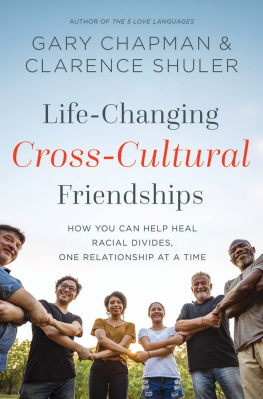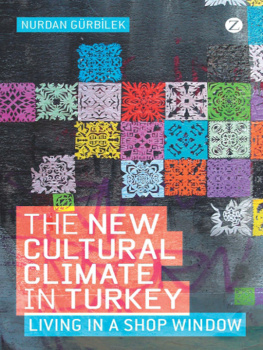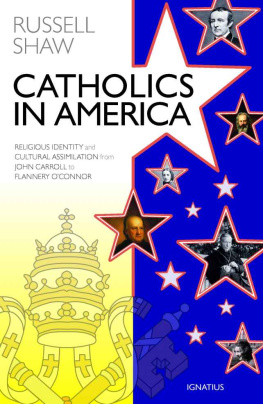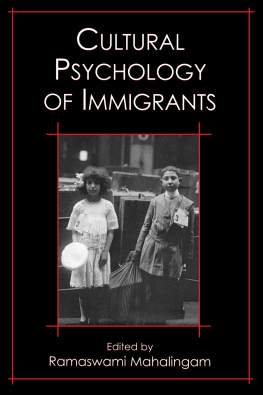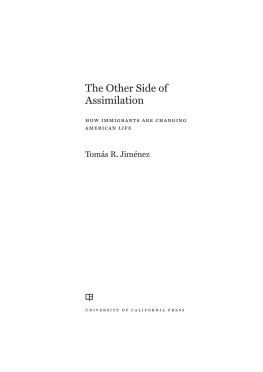THE CULTURAL ONE OR THE RACIAL MANY
To Virginia
The Cultural One or the Racial Many
Religion, culture and the interethnic experience
Evandro Camara
First published 1997 by Ashgate Publishing
Reissued 2018 by Routledge
2 Park Square, Milton Park, Abingdon, Oxon, OX14 4RN
52 Vanderbilt Avenue, New York, NY 10017
Routledge is an imprint of the Taylor & Francis Group, an informa business
Copyright Evandro Camara 1997
All rights reserved. No part of this book may be reprinted or reproduced or utilised in any form or by any electronic, mechanical, or other means, now known or hereafter invented, including photocopying and recording, or in any information storage or retrieval system, without permission in writing from the publishers.
Notice:
Product or corporate names may be trademarks or registered trademarks, and are used only for identification and explanation without intent to infringe.
Publisher's Note
The publisher has gone to great lengths to ensure the quality of this reprint but points out that some imperfections in the original copies may be apparent.
Disclaimer
The publisher has made every effort to trace copyright holders and welcomes correspondence from those they have been unable to contact.
A Library of Congress record exists under LC control number:
ISBN 13: 978-1-138-39149-9 (hbk)
ISBN 13: 978-0-429-42268-3 (ebk)
This book grew out of my long-standing interest in culture and interethnic life, which has broadened and deepened over the years on account of my having lived in two different sociocultural contexts, Brazil and the United States. Despite the parallels shared by these two societies with respect to their cultural and ethnic developmental history, their differences in this regard are far more striking, and it is precisely this aspect that has nurtured my informal and academic interest in this issue, and motivated me to organize my feelings and insights into this work. I have specifically endeavored to identify and explain the cultural and ideological forces that have accounted not only for the divergences in interethnic arrangements between the two societies, but also, with reference to the U.S., for the persistence of ethnic divisions and conflict, and the resurgence of separatist trends over the last decade, in no small measure through the effect of the multiculturalist movement, notwithstanding the integrationist changes in dominant-minority relations that marked the end of the Jim Crow period in the 1960s.
During the course of writing this book I have amassed a number of debts. The project was started within the context of a postdoctoral visitorship at the University of Chicago in 1991-1992, I would like, in this connection, to acknowledge the invaluable assistance and encouragement of Martin Riesebrodt, of the Sociology Department and Divinity School at that institution, who gave unstintingly of his time and expertise towards helping me organize and develop my ideas, and thus get the work "off the ground."
I am also indebted to Martin Marger, of Michigan State University, who, at a later point in the research, read critical parts of the manuscript, and offered meticulous and very useful comments and suggestions.
The work has likewise benefitted, particularly in terms of certain key theoretical aspects, from the incisive criticisms of Craig C. Calhoun, of the University of North Carolina-Chapel Hill, for which I am grateful.
Special thanks also to the editorial staff at Ashgate-Avebury, in particular Kate Hargreave, Anne Keirby, Lindsey Wilsden, Valerie Polding, Tracey Daborn, and Pauline Beavers.
Additionally, I wish to acknowledge the assistance of Anita Vanschaik and her clerical staff at Emporia State University for expertly typing some sections of the manuscript.
In a larger sense, I owe a special debt, as regards my early graduate efforts, to Larry Reynolds, of Central Michigan University, and, regarding my years in the doctoral program and beyond, to Fabio Dasilva, of the University of Notre Dame, for having stimulated and guided my interest in the theoretical-interpretative understanding of social things.
Finally, Virginia de Oliveira-Alves, to whom this book is dedicated, has been my sternest critic and greatest benefactor. She has consistently pushed me toward greater analytical rigor and clarity of expression, and, as concerns this project, her substantive contributions to it, particularly during its initial phase, enabled me to rethink key formulations and tighten the general thesis.
The main stars in the philosophy of culture are to be found in the heaven of theology.
Jacques Maritain
The nature of intergroup relations and inequality varies significantly across multiethnic or pluralist societies, a phenomenon that has constituted a matter of long-standing and lively sociological interest. This has been especially the case in the United States, where the resurgence of sociological, anthropological, and historical scholarship in this area since the late 1960s attests to the continuing relevance of this problem in social studies and to its persisting presence in the social milieu. Some three decades after the momentous changes in the American legal system that led to the dismantling of the Jim Crow system of race segregation, discriminatory and segregationist practices as well as prejudicial feelings and attitudes against "nonwhite" minority groups still persist in American society, and even gathered strength through the 1980s. This phenomenon is, indeed, "a commonplace of empirical verification," says one observer (Gordon, 1964:114), and it invokes the same dilemma addressed by Gunnar Myrdal in the 1940s in his celebrated and now classic study An American Dilemma. There has been a steady reawakening of public and scholarly attention to the problem of intergroup relations, particularly as concerns race and ethnicity. This heightened societal sensitivity to this problem results precisely from the fact that, despite the progressive social, economic, and political incorporation of racial and ethnic minorities since the late 1960s, the deep cleavages which separate the dominant and subordinate ethnic groups in this society have not disappeared. Not only does race remain the main regulative principle of social relations, but also, racism continues to be a conspicuous feature of social organization. It is expressed in the presence of de facto inequality and segregation in the workplace, housing, the educational system, Lastly, it is seen in the racially-motivated turmoil and conflict that have erupted in the past decade on campuses and on the street, ranging from interpersonal harassment to more serious forms of conflict. In the single year of 1982, there were more than 500 documented cases of racist violence against blacks by white teenagers alone, which included "cross burnings, vandalism, arson, physical assaults, and murder" (Ofari, 1984). A specific example could be cited for 1987, the Howard Beach incident of Queens, New York, which involved the unprovoked beatings of some black teenagers by white teenagers. Of much greater proportions and more dire consequences were the April 1992 events of Los Angeles, following the acquittal of four white police officers who had been charged with extreme police brutality against a black man who had led them on a car chase on the highway. This legal outcome sparked days of full-scale rioting, looting, and burning of buildings, in which some people ended up dead and hundreds injured. The atmosphere was one of greatly exacerbated interracial tension.


